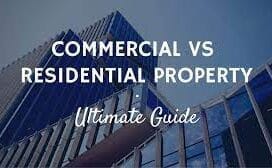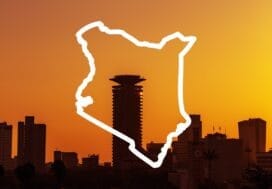Kenya’s housing market has a lot of potential. As authorities in the public and private sector study the growing urban population and look for ways to reduce the housing deficit, what options are available when it comes to green building solutions?
Kenya’s urban population has been increasing at an average rate of 3.78% annually between 2019 and 2023, which has led to a high demand for housing in cities like Nairobi and Mombasa. Urban growth comes with challenges, which have opened the door to innovative and sustainable building solutions that in turn have minimized environmental impact and costs.
This article explores the process of building green in Kenya including green design, green buildings features and their benefits, sustainable design strategies at the site, during design stage, for the builders during construction phase and during building use, green building assessment tools and their use during construction, and green financing options.
Green Design
This is a design method seeking to minimize the negative environmental impact of buildings and other structures. Green design involves using design strategies and techniques that are eco-friendly and energy efficient.
The goal of green design is to construct buildings that are energy efficient, that use eco-friendly materials, and reduce waste while considering the building’s lifecycle from construction to eventual demolition. Many designers and architects are adapting green design models into their work as the government also drafts policies and regulations that promote sustainable building practices.
Green Building
A green building is considered green if the design, construction, and operation have a positive and less negative impact on the climate, environment, and users. A green building includes new constructions and renovation of existing structures, protects natural resources, and improves the tenants’ quality of life.
The features of a green building include:
- Energy efficiency – appliances like energy-efficient lighting that can reduce the building’s energy consumption
- Renewable energy – solar panels can be used to provide lighting and heat and reduce the building’s carbon footprint.
- Water efficiency – can be achieved by installing features like low-flow toilets, rainwater harvesting systems, and water-efficient landscaping.
- Eco-friendly materials – these are materials that are non-toxic and sustainable such as recycled steel, recycled plastics, and hempcrete, among others.
- Smart home and smart building technologies – smart building technologies include building automation systems, sensors, and energy management systems that can help reduce energy consumption.
Benefits of Green Buildings
Green buildings have a lot of benefits both for the environment and for the tenants and the larger community. The benefits include reduced carbon emissions and improved air quality that promote health and well-being. Other benefits are:
- Economic benefits like job creation through workers who will be recruited in the sector, rise in property value for developers seeking to rent their properties, and lower operating cost due to reduced waste and water use, and reduced energy consumption.
- Environmental benefits mean that the building will enhance and protect biodiversity and ecosystems by minimizing harmful impacts during and after construction, reducing pollution and conserve the environment.
- Material benefits include material efficiency with materials that can be recycled and reused and waste reduced. It also includes reduced strain on local resources and promoting sustainability for a more resilient environment.
- Wellbeing benefits include improved health and well-being, improved comfort and satisfaction of occupants, a healthier environment through the use of natural and non-toxic materials, greenery and access to light, and positive psychological and social benefits among others.
- Water benefits include water efficiency such as rainwater harvesting, recycling, and minimal disposal that save between 20-30% of water compared to traditional buildings.
Sustainable Design Strategies
The design strategies employed in different stages of the project and with different facilitators are meant to promote sustainability and lower the overall costs of construction. The various stages are described as follows:
- Site – site selection prioritizes sites in close proximity to public infrastructure to reduce dependence on private vehicles, sites away from major sources of pollution minimize exposure to air and noise pollution. Site planning involves adapting green spaces such as green walls, gardens, and rooftop gardens.
- Design – sustainable design includes courtyards to promote airflow, reusing existing buildings/services to reduce waste, shared common areas such as laundry and recreation facilities to reduce resource consumption, power and water supply designs are also explored for efficiency and reduced consumption.
- Builders – engaged as consultants with expertise in green design and construction such as architects, engineers, and quality surveyors to implement sustainable strategies from the start.
- Construction phase – materials are selected to minimize site disruption and reduce natural resources degradation, environmental impact, and improve occupants’ health.
- Building use – installing energy-saving bulbs reduce electricity consumption and lowers cost in the long term. Energy-saving efficient appliances such motion sensor lights also use less electricity. Solid wastes are disposed on a separate garbage collection system and a collection company that practices recycling and waste reduction is hired.
Green Building Assessment Tools
Green building assessment tools are used to evaluate the performance of buildings and ensure they are constructed in an environmentally responsible manner. The tools help assess sustainability of building projects and are used to assess the number of aspects such as energy efficiency, water conservation, waste management, indoor air quality, and use of eco-friendly materials. Some of the tools are:
- Safari Green Building Index – this is an initiative of the Architectural Association of Kenya (AAK). It is a national rating system that can be applied to all types of buildings across different climatic zones in Kenya and across East Africa. The index was created to assist in evaluating environmental performance of completed projects and promote sustainability through reduced energy consumption and minimized carbon emissions.
- The WELL Building Standard – is a performance-based system that focuses on measuring, certifying, and monitoring features of the built environment that impact human health and well-being. It evaluates buildings based on categories like air, water, nourishment, light, fitness, and comfort. The categories are further divided into 100 features that evaluate building impact on human health such as air quality, access to natural light, and stress reduction among others.
- Green Star Certification – is a system that evaluates building sustainability in communities in Australia, New Zealand, and South Africa. The system was developed by the Green Building Council of Australia, considers a range of environmental and social factors, and assesses projects in 8 categories: innovation, emissions, materials, energy, transport, land use, water, and indoor environment quality.
- Excellence in Design for Greater Efficiencies (EDGE) – is an online platform, a green-building standards and a certification system for over 140 countries. The EDGE application helps to determine the most cost-effective options for designing green buildings within a local context.
Green Financing
This refers to financial products and services that support environmentally sustainable projects and initiatives. Kenya is one of the leaders in green financing in Africa with an increasing number of banks, financial institutions offering a variety of green products and services. Some products include:
Green Bonds
Green bonds are debt instruments used to finance projects that benefit the environment, such as renewable energy. Some institutions that have issued green bonds are:
- Acorn Project (Two) Limited Green Bond – in 2019, real estate developer, Acorn Holdings Limited, issues Kenya’s first green bond. The bond was listed on the Nairobi Securities Exchange and raised Ksh.4.3 billion (approx. $40 million). The funds were used to finance the development of environmentally-friendly student accommodation buildings.
- Kenya Commercial Bank Green Bond – in 2019, KCB issued a Ksh 9 billion ($83 million) green bond to finance sustainable projects. The bond was also listed in the NSE and was oversubscribed. This indicated a strong demand for green financing in Kenya.
- East African Development Bank Green Bond – in 2015, the EADB issued a $5 million green bond to finance renewable energy and energy efficiency projects in East Africa. The bond was listed in the NSE and was also oversubscribed.
Government Incentives
The National Treasury is also promoting green bonds as a new financial instrument for green investments. The Treasury offers 100% tax exemption on interest income for bonds and securities used to raise funds for building green projects as defined by the Green Bonds Principles.
Bank Financing Products
Equity Bank Green Energy – the bank is offering financing options that include loans for solar panel installation, biogas systems, and energy efficient appliances. The loans have flexible repayment terms and competitive interest rates.
KCB Green Loan – the product is designed to finance sustainable projects such as renewable energy, energy efficiency, and waste management initiatives. The loan has a repayment period of 60 months and is available to both individuals and businesses.
Stanbic Bank Kenya Green Loan – The bank is offering a green loan product designed to finance the installation of solar panels, energy efficient lighting systems, and other renewable energy projects. The maximum payment period is 60 months and is also available to businesses and individuals.
Building green, just as with traditional construction, already has its groundwork laid. It is only a matter of time before more investors and the government can tap into the available resources and make the vision of affordable housing in urban areas around the country a reality for many citizens.
(with excerpts from the book “Building in Kenya: A Real Estate Developer’s Toolkit” by Emma Miloyo and Robyn T. Emerson)





